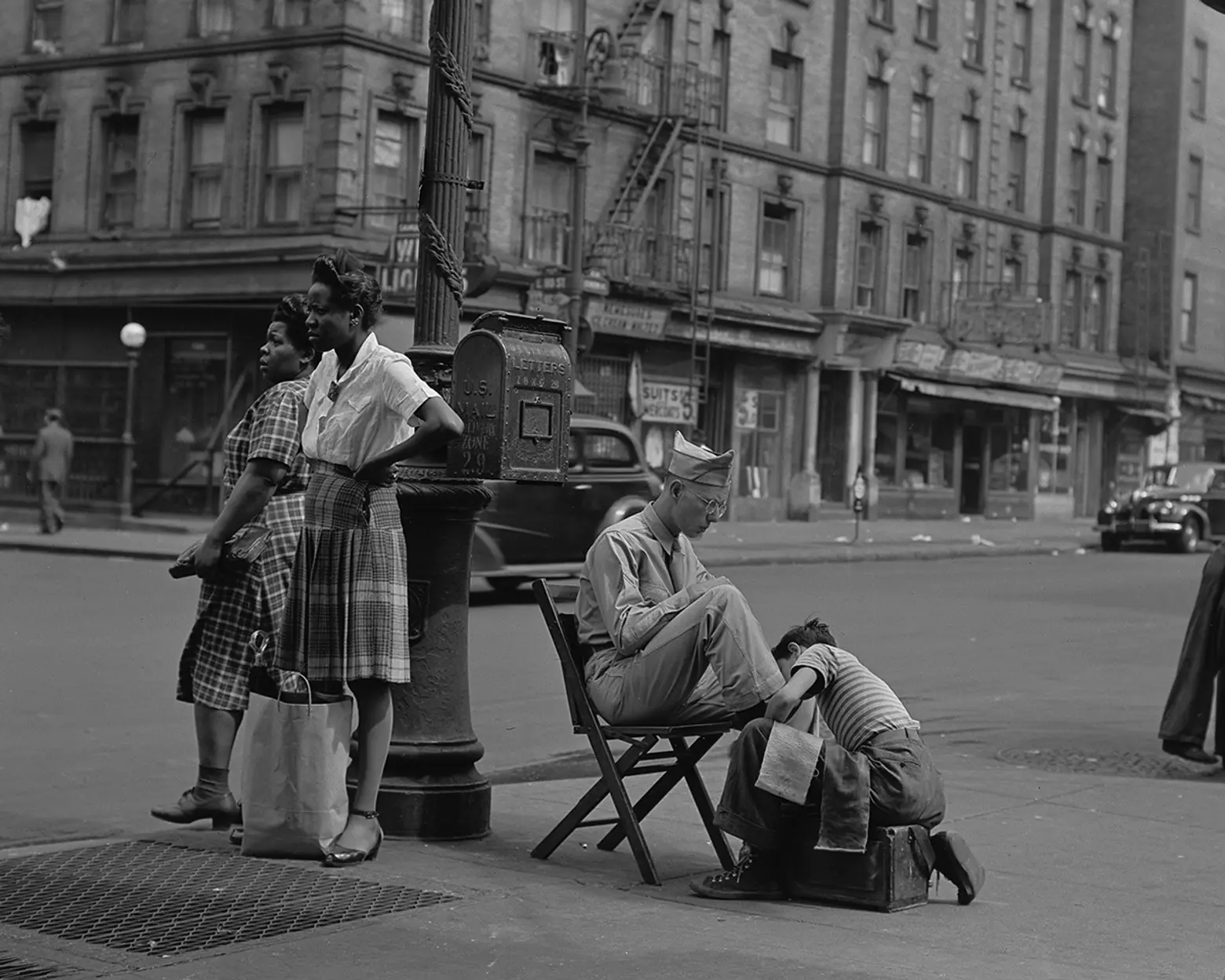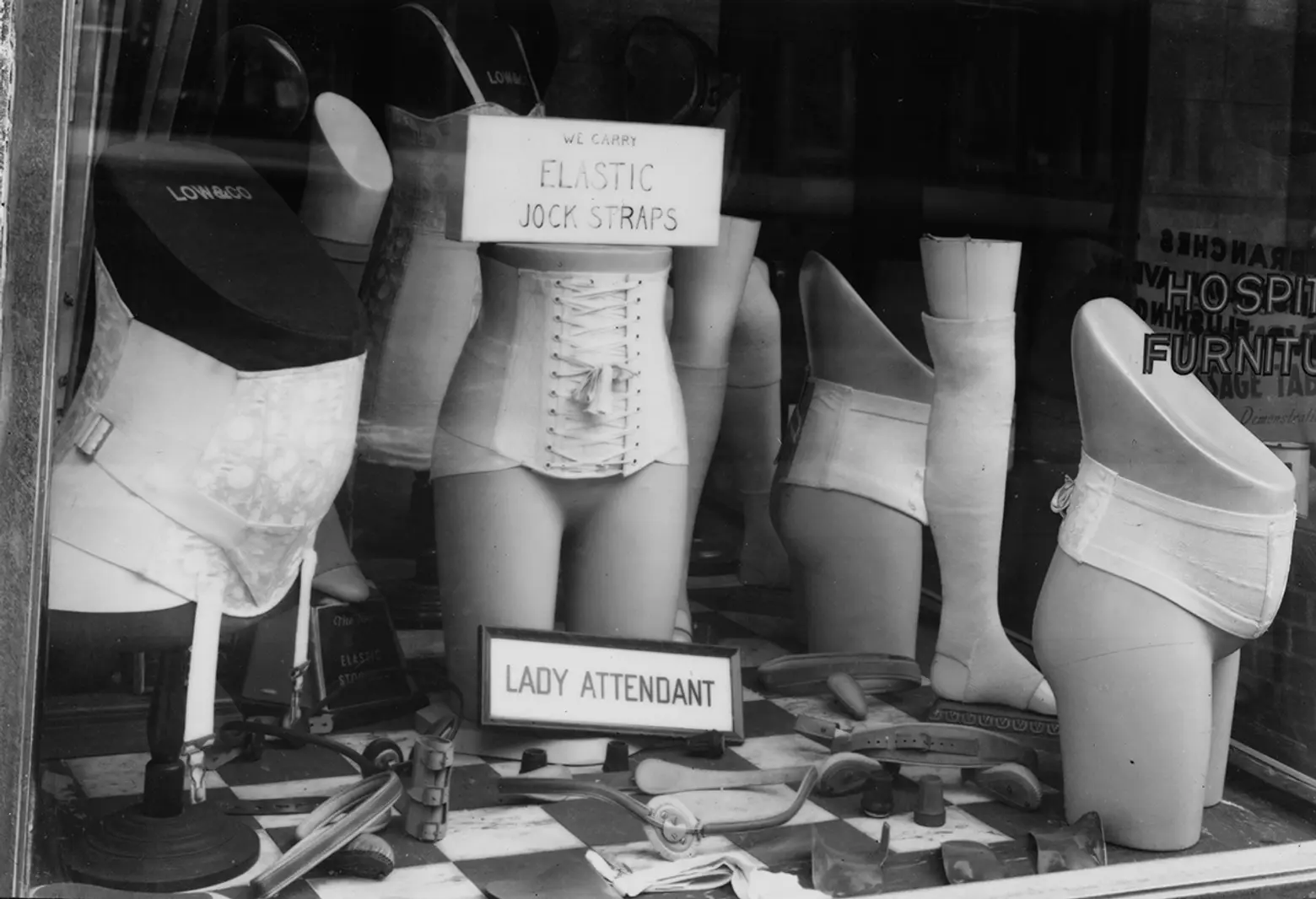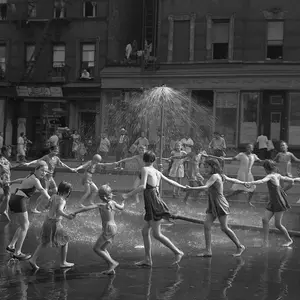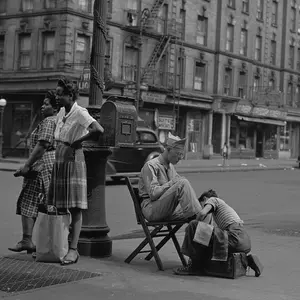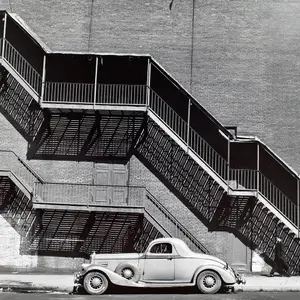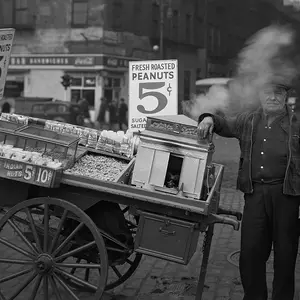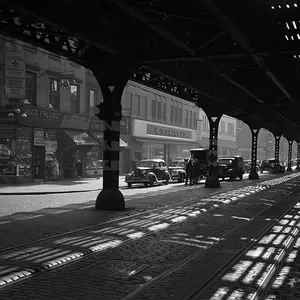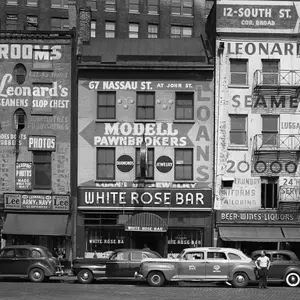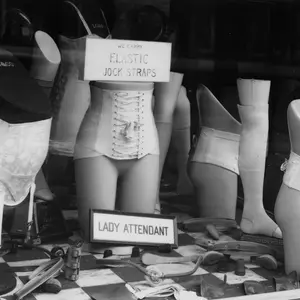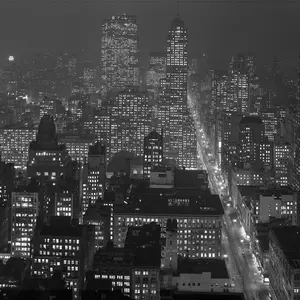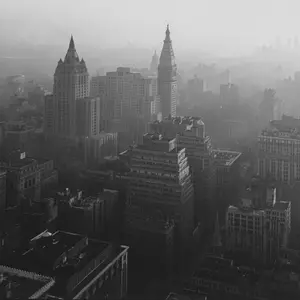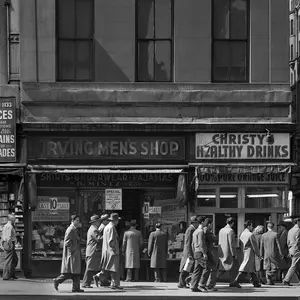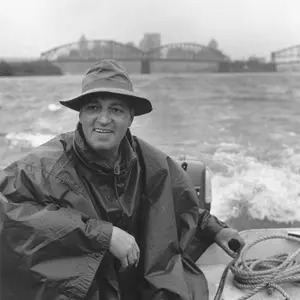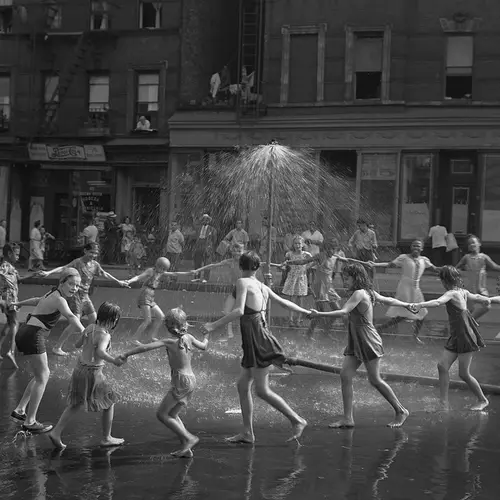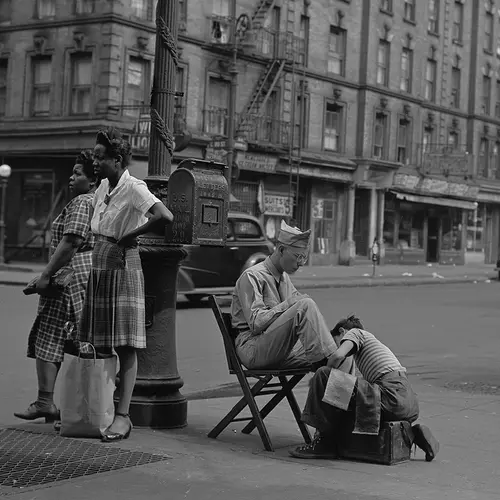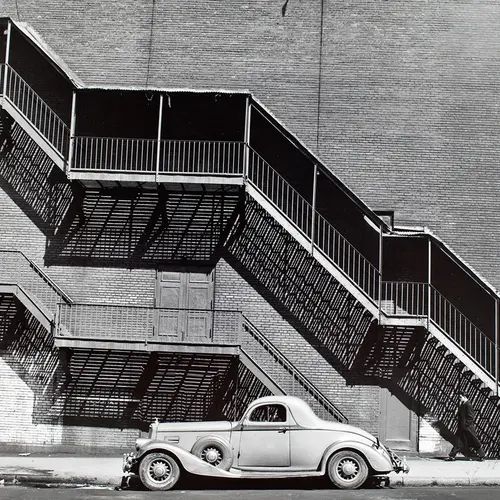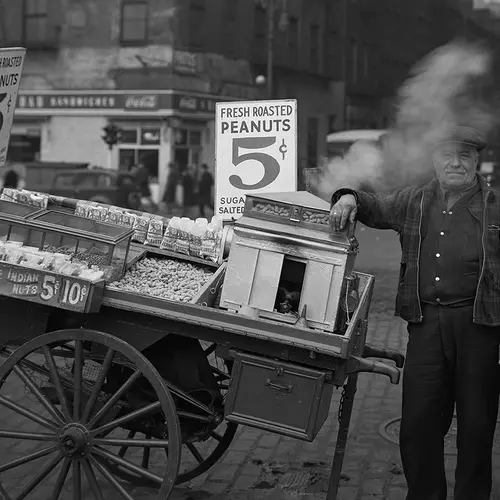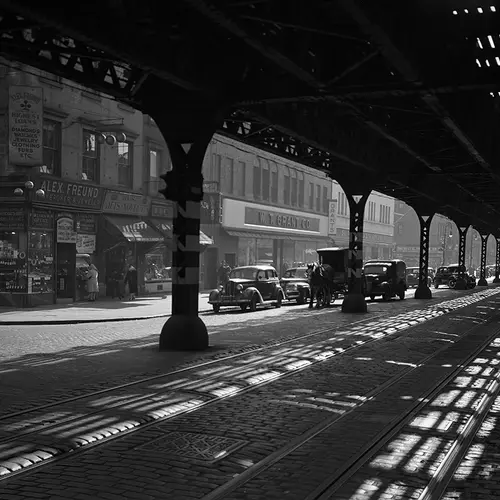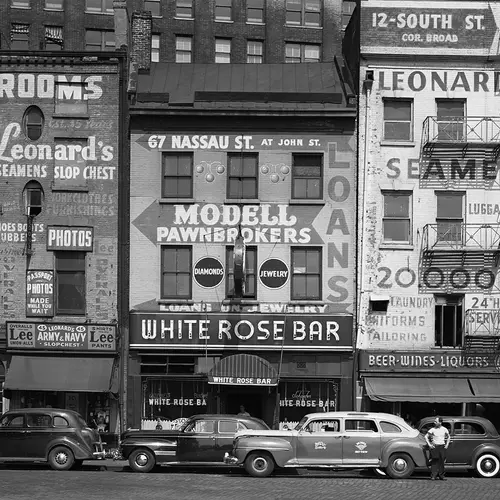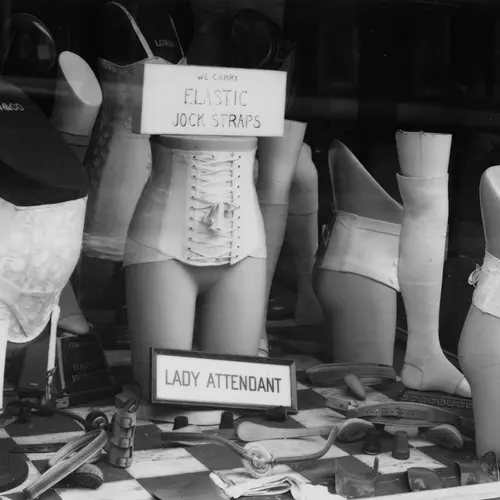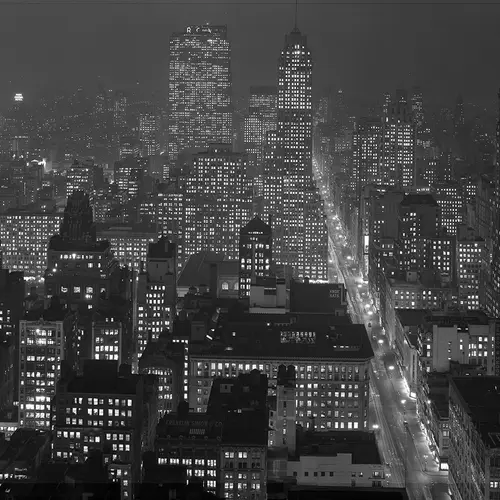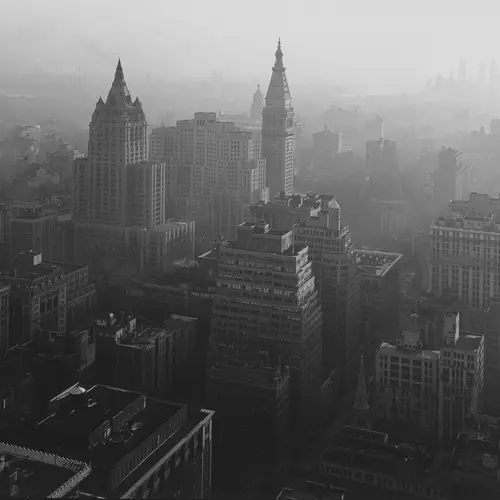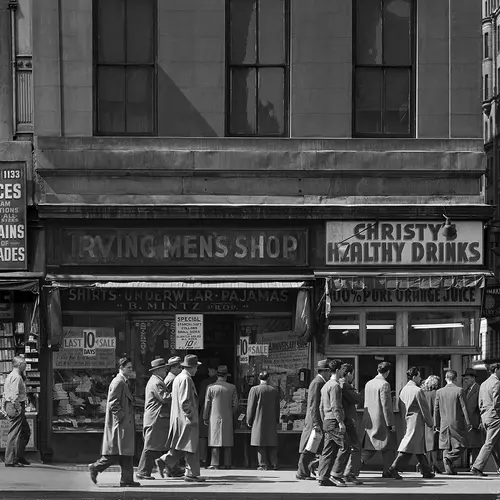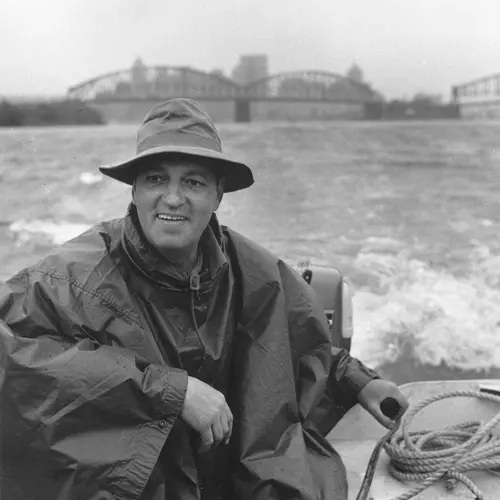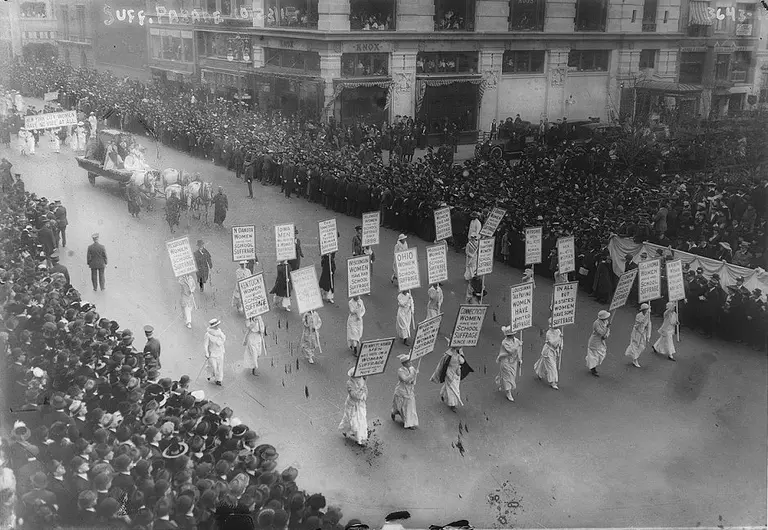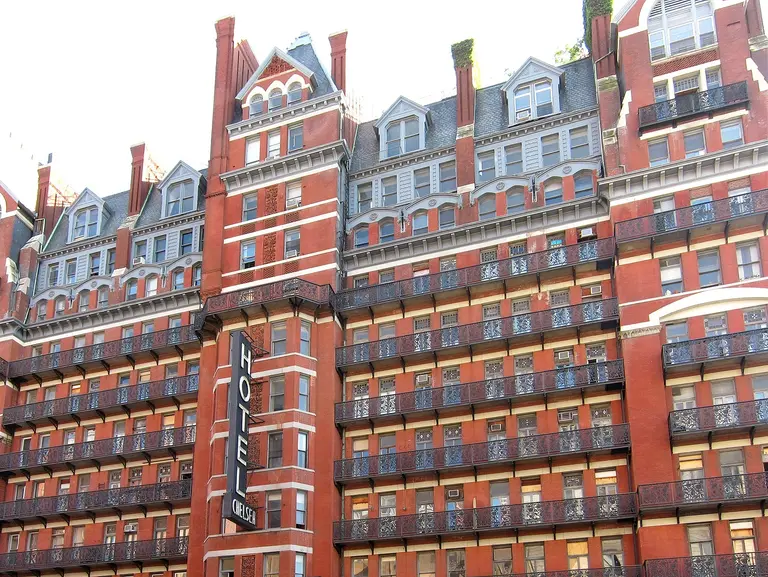The Urban Lens: Explore the whimsical photography of Todd Webb with former LIFE editor Bill Shapiro
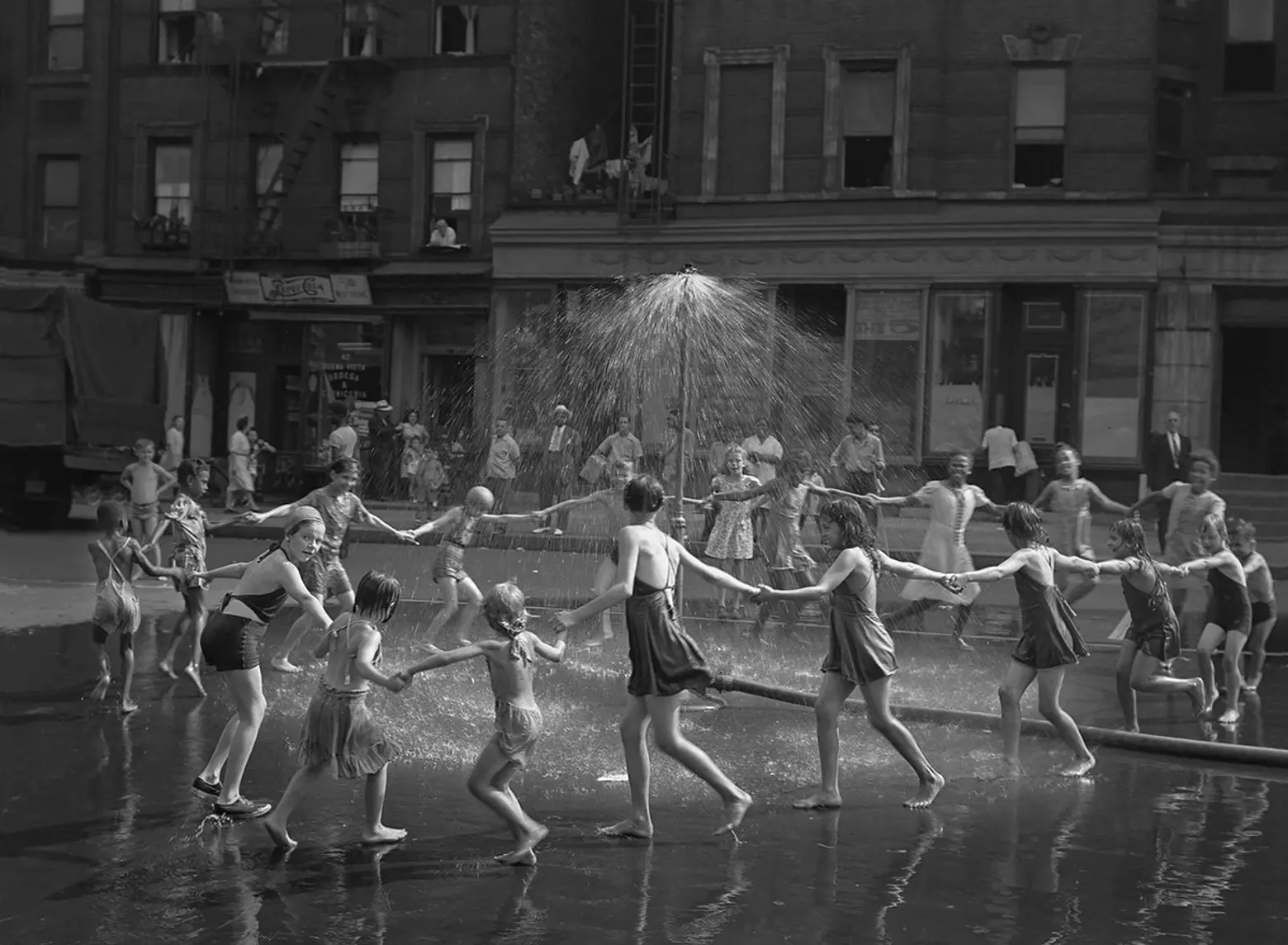
“I instantly fell in love with Webb’s work,” says former LIFE editor-in-chief Bill Shapiro, “with the beauty he captures, with his sense of the life of the street; with the way he frames both the sweeping, iconic skyline and those small, fleeting moments that define the city that New Yorkers love.”
These sentiments seem to be shared by just about everyone who encounters the work of Todd Webb for the first time. Webb, most fittingly described by Shapiro as “the best NYC photographer you’ve never heard of,” worked and laughed alongside photography’s upper echelon, including Georgia O’Keeffe, Walker Evan, Gordon Parks and Ansel Adams, but unlike his well-known friends, Webb was never interested fame. Instead, he quietly took to documenting life in America, particularly post-war New York between 1946 and 1960.
While a number of institutions have collected Webb’s work over the decades, he has remained largely forgotten. That is, until now. This week, two exhibits have opened focused Webb’s New York photos, the first “A City Seen” at The Museum of the City of New York (where he incidentally held his first solo show 70 years ago), and the other, “Down Any Street: Todd Webb’s Photographs of New York 1946-1960,” at The Curator Gallery in Chelsea.
In this week’s Urban Lens feature, Bill Shapiro, who organized the downtown show, speaks to 6sqft about the significance of Webb’s work, the photographer’s personal motivations, and he shares some of his favorite Webb images now on exhibit.
▽▽▽
How were you first introduced to the work of Todd Webb?
Bill: I got a call from Ann Moore, the owner of one of the galleries where I curate photography shows. She said that someone had dropped off a box of photographs that she wanted me to look through. Usually, when someone drops off a box of photographs, you pretty much want to run in the other direction. But when I opened the box, the very first picture was absolutely stunning. I mean gorgeous. It instantly reminded me of some of the great LIFE photographers. But so did the second picture . . . and the one after that. I spent hours going through those pictures.
That said, I don’t want to give you the impression that this was a Vivian Maier case of a totally unknown photographer and the photos were discovered in someone’s dusty attic. Webb was a celebrated photographer in the 40s and 50s; in fact, exactly 70 years ago, he was given a solo exhibit at the Museum of the City of New York. That was huge. His work has been collected by major museums, including MOMA. But he hasn’t had a show in NYC in 20 years. And while I know a fair amount about photography, I had never heard of Todd Webb. Most of the folks I talk to today haven’t heard of him, either. But he is definitely having a moment. Not only is he having a gallery show this month, but the Museum of the City of New York is also staging a show of his photographs of New York. And there’s a book coming out in a few months.
How would you characterize his work? What makes him different from other photographers of his time, like Robert Frank, who also documented life in the streets of NYC?
Bill: Great question. It’s interesting that you mention Frank because they were contemporaries and were both traveling and shooting on Guggenheim grants at the same time—and both were exploring post-war America. I love Frank’s work. Being from another country, his perspective has always seemed to me to be that of someone from the outside looking in and trying to make sense of America—its strangeness and its many contradictions. There’s an “otherness” to it. There’s also a sense of sadness to some of his pictures. Todd Webb’s work, on the other hand, has a tenderness to it. That’s how Alfred Stieglitz described it. Webb also has an eye for architecture and how the city’s buildings and signage provide a stage for passersby. He also liked to shoot the quirky and amusing; his photographs of signs and shop windows often convey that. I feel like Webb is more “of the people” than Frank.
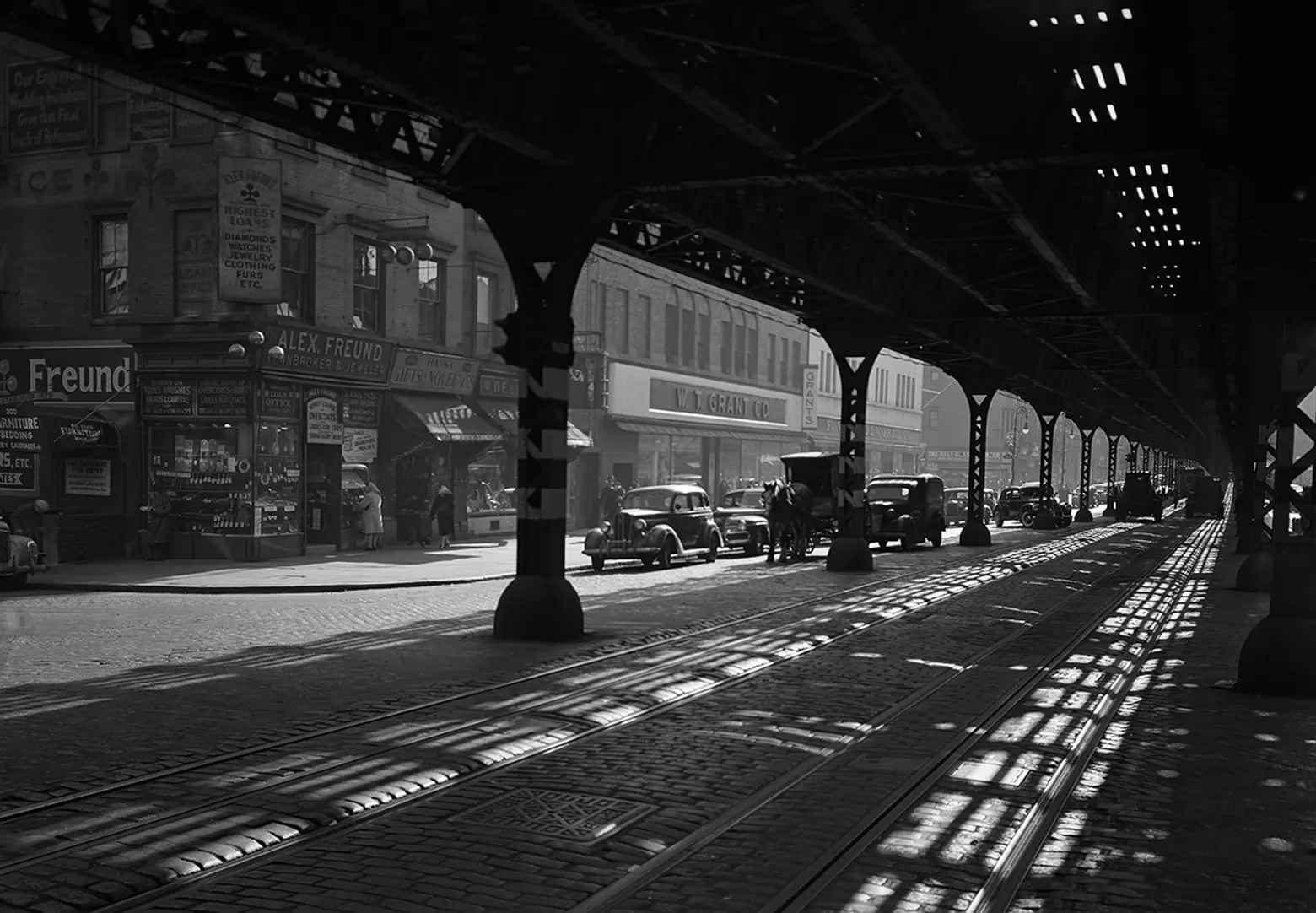 “Under the El, Third Avenue” 1946
“Under the El, Third Avenue” 1946
Do you have any sense why he opted not to pursue fame like his friends?
Bill: He came to New York City after the war and fell in with an amazing group of friends: Berenice Abbott, Lisette Model, Beaumont Newhall [who was the photography curator at MOMA], Georgia O’Keeffe and Alfred Stieglitz, Gordon Parks, Walker Evans, etc. He lived with Harry Callahan. All of these folks are obviously much more well-known than Todd Webb. I’ve read Webb’s journal—which he began when he moved to New York and which he kept for about 40 years—and what he wants more than anything is to make great pictures. He doesn’t care about fame or fortune. In fact, he often says that his material wants get in the way of his making good pictures. Here’s an entry from his journal that should give you a sense of what I’m talking about:
3/21/46:
Once in a while I have some doubts. Is all of this sacrifice I am making worthwhile? I have hundreds of new photographs but what does it mean? On the other hand, if I were working on a job I would probably only have a few hundred dollars to show for my time and what the hell would that mean? I would rather have the pictures. The dollars would be spent and forgotten in a year or two. The photographs will represent the rich and wonderful living I am experiencing for many years.
Webb also left New York. He moved to Paris for a few years—which is where he met his wife—and later he and his wife followed his great friend Georgia O’Keefe to Santa Fe. Back then, it was harder to get famous in Santa Fe.
Why did you decide to curate an exhibit around his work?
Bill: I instantly fell in love with Webb’s work, with the beauty he captures, with his sense of the life of the street; with the way he frames both the sweeping, iconic skyline and those small, fleeting moments that define the city that New Yorkers love. I also felt a responsibility to make sure that Todd Webb got his due, and the respect that he deserves for producing a stunning body of work. I couldn’t stand by and let a guy like that recede into the shadows. Something else: Right now, our country is showing a cruel streak. I felt like the time was right to display work with a strong sense of humanity.
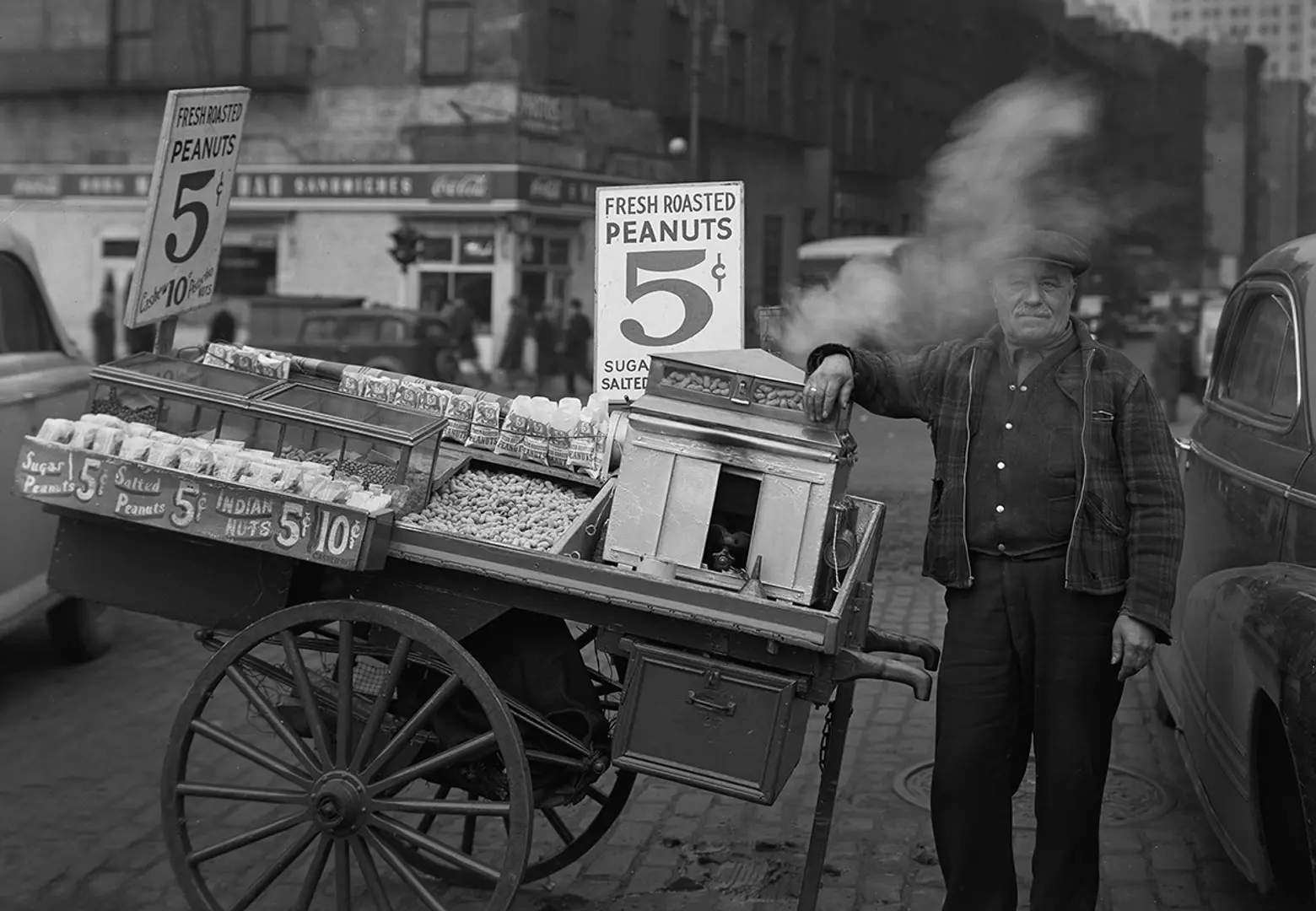 “The Battery, New York” 1946 (Peanut Man)
“The Battery, New York” 1946 (Peanut Man)
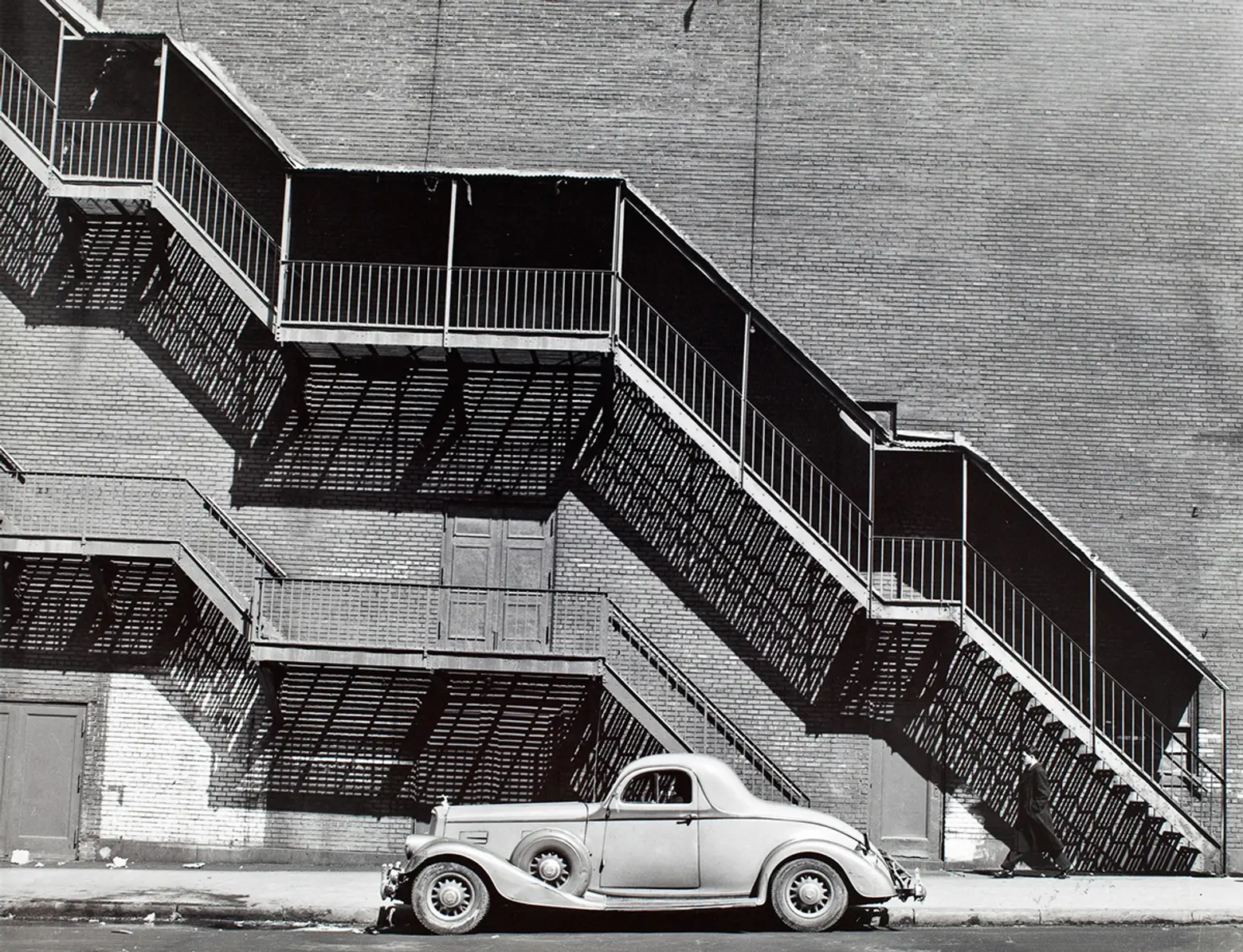 “Mr. Perkins Pierce Arrow” 1946
“Mr. Perkins Pierce Arrow” 1946
What are a few of your favorite pieces from the archive?
Bill: There are a few that I keep coming back to. The peanut man with his pushcart, with his cap, with his mustache, with his pride. That feels like old New York to me. The picture of the car under the cascading stairs is flat-out elegant and beautifully composed. The man in the far right corner? Perfection. The picture that shows the city at night: That’s my city! See how it glows? You can almost feel the hum in the offices and along the streets. It’s timeless.
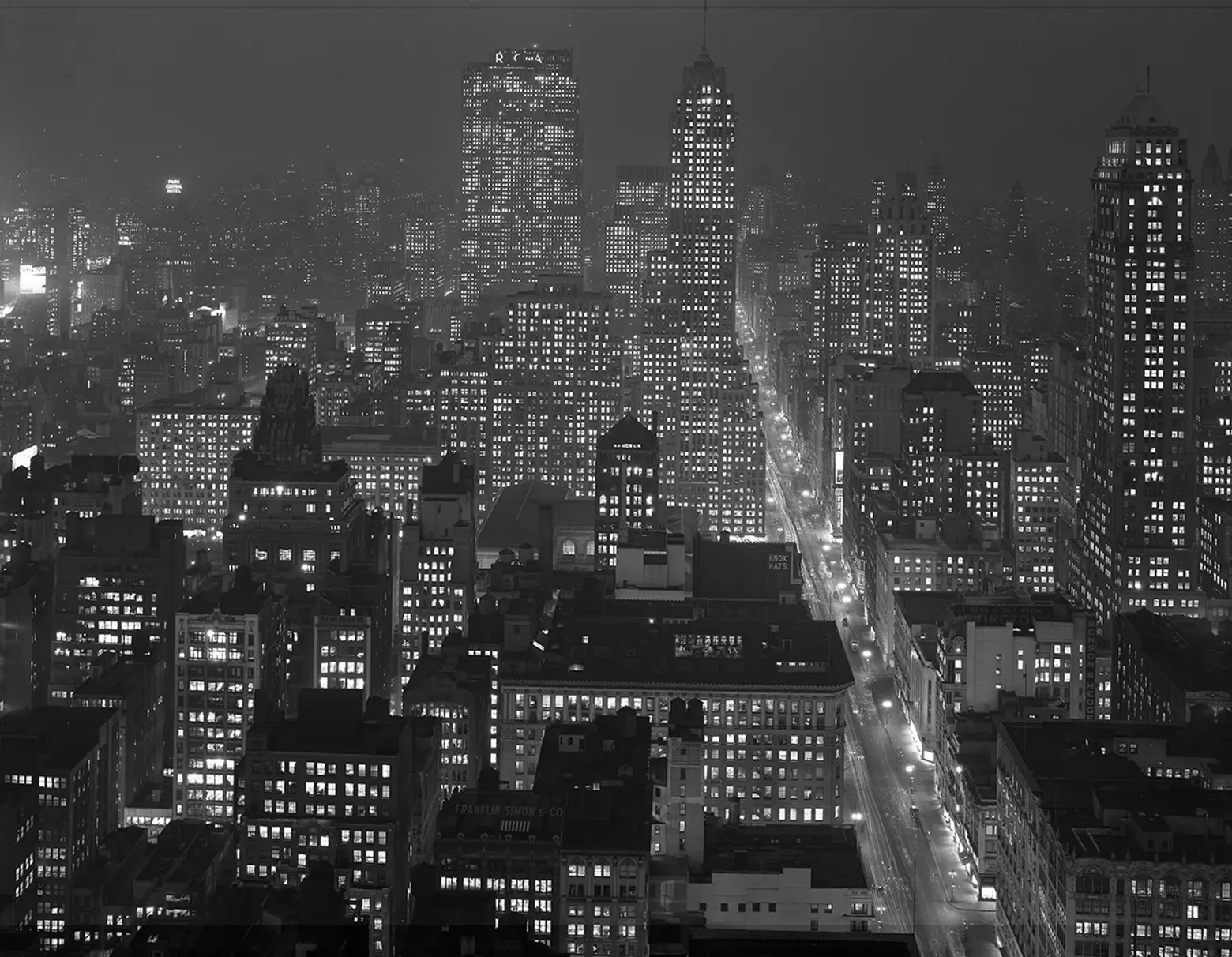 “From the Empire State Building” 1946
“From the Empire State Building” 1946
WHERE TO SEE MORE:
Todd Webb’s photographs are currently on display at both The Curator Gallery (through May 20, 2017) in Chelsea and at the Museum of the City of New York (through September 4, 2017).
RELATED:
- See New York’s Subway Through the Eyes of a 17-Year-Old Stanley Kubrick (Photos)
- The Urban Lens: Sid Kaplan shares historic photos of the Third Avenue El coming down
- The Urban Lens: Langdon Clay’s 1970s photographs of automobiles also reveal a New York City in decay
All images are copyright the Todd Webb Archive
